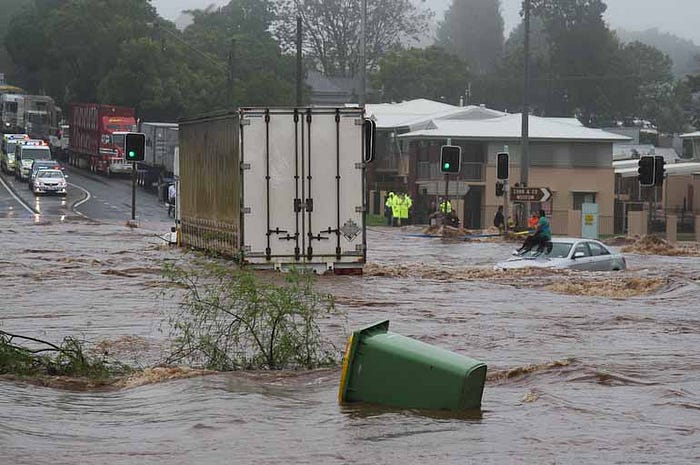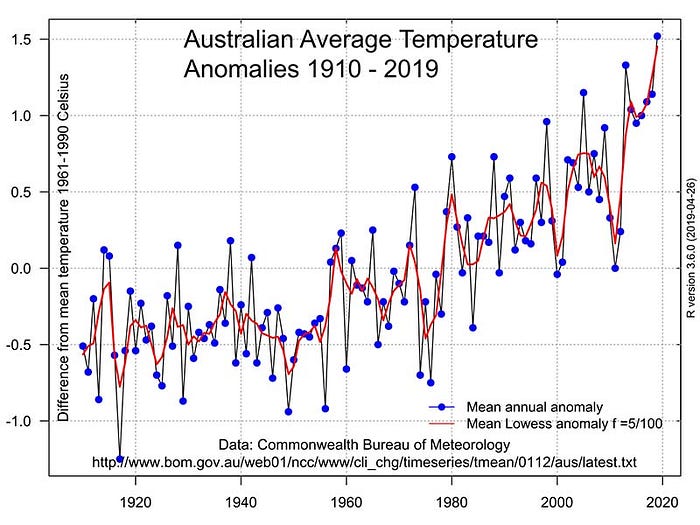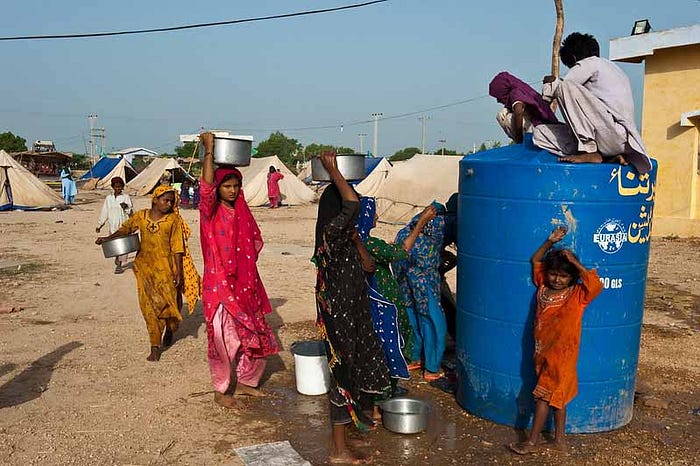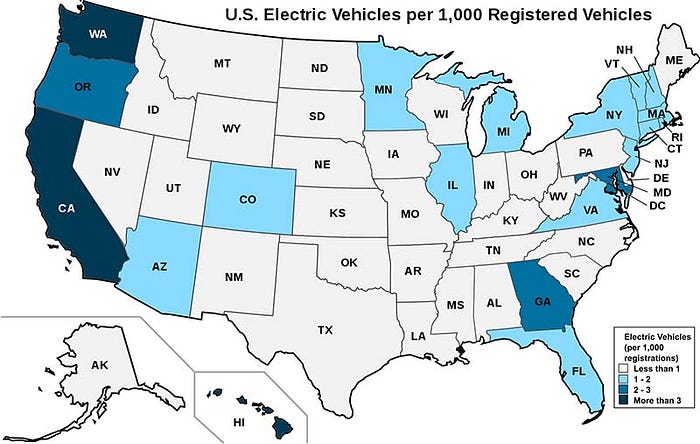If countries were people, and fossil fuels were the drug, Australia would be the addict.
Not only it is the third-largest exporter of fossil fuels in the world, its entire economy is dependent on it. Australia still makes 40% of its energy by burning coal, with another 50% powered by oil and gas. Hundreds of thousands of people are currently employed in fossil fuel industries, and none of them want to lose their jobs.
This is not a unique situation. All countries are dependent on fossil fuels. Oil isn’t just how countries pay their bills and light their homes — it’s also the stuff we use to make tyres and Star Wars toys.
None of the developed countries want to pull the plug just to score some planet-points.
But Australia isn’t your typical developed country.
Located on one of the driest strips on the planet, Australia really, really doesn’t want the Earth to keep heating up. Even a few degrees can cause massive droughts in an otherwise fertile environment, and most of Australia isn’t a fertile environment.
In fact, most of it is a desert. That’s why 95% of Australians live on the humid coastline down below, which isn’t exactly the safest place to survive the apocalypse. Heavy rains are becoming more and more frequent in that part of Australia, and it’s already drowning in floods.
 Woman trapped on a car roof during flash flooding in Toowoomba.
Woman trapped on a car roof during flash flooding in Toowoomba.
When other developed countries are discussing these questions, they’re discussing them as if climate change was some urban legend people stole from an overcaffeinated sci-fi movie. They’ll throw in a few buzzwords, score a few political points, and move on.
Neither them nor their audiences truly believe that climate change is a here-and-now problem, because that’s just how humans are wired. It’s extremely difficult for people to think in terms of generations. Something like climate change becomes a “maybe” problem for a hypothetical offspring.
But only the rich part of the Northern hemisphere can afford to think that way.
Because in Australia, climate change is far from hypothetical.
For example, entire housing areas are severely underpriced right now because of the constant threat of flood. As a result, young people who can’t afford houses elsewhere are flocking into these high-risk, uninsurable habitats. This isn’t just an absurd situation — it’s a Catch-22 for these people.
Massive bushfires may be nothing new to Australians, but climate change isn’t making it any better. In fact, it’s making it much, much worse. Dry soil, fried fuel and extreme heat means more and more of Australia is becoming a warzone against genocidal wildfire.
Should things go as predicted, by 2030, the number of days above 35 degrees celsius is predicted to double in Sydney. This may not sound like much, but when you take into account the city’s average humidity of 65%, you start counting the bodybags.
(Sweat doesn’t evaporate well above 40% humidity. When people can’t sweat, they cook inside and die.)
 Australian temperatures since 1910. At 3 degrees, it’s game over.
Australian temperatures since 1910. At 3 degrees, it’s game over.
Australia is not blind to this problem.
Right now, it’s pretty much the only country where climate change has entered mainstream political debate. And I’m not talking about the occasional $2 billion bill thrown to quiet down activists or the quick climate denial to score some popularity points with your voters.
In Australia, the climate is the campaign. Candidates lead with their different climate stances, and people vote based on those stances. Just the fact that their major parties have massive differences in their climate targets is enough to show how much of a real topic it is for Australians.
People criticize Australia for their inability to clean out their own backyard. They point at countries like the U.S. which pledge a 65% reduction in carbon emissions by 2050.
But pledges are just pledges. We’ve seen how easy it was for Donald Trump to break that pledge when it was convenient for him. And U.S. is still successfully pumping out C02 into the atmosphere like there’s no tomorrow.
Today’s politicians are quick to give out 2050 pledges because they’ll be long retired (or dead) by the time those pledges will need to be fulfilled. That’s a deep, deep cultural flaw, and there’s no technology to fix it.
 In 2017, Donald Trump decided to quit the Paris Agreement on climate change because it would “put U.S. at a permanent disadvantage.”
In 2017, Donald Trump decided to quit the Paris Agreement on climate change because it would “put U.S. at a permanent disadvantage.”
What Australia has is much stronger than a pledge. It has fear.
And I trust fear.
When poor people lose whatever little they have in life, they accept it. They adapt. For example, when this Bangladeshi woman had to migrate into the city because her land dried out, she didn’t cry for the camera. She didn’t accuse her government of injustice. She swallowed her troubles and marched on, because loss and hardship is what she expects from life by default.
Rich people are not like that. Rich people get used to the good stuff. They get used to the cars and the roads and the AC. They get used to the convenience of online delivery and the dividends of a growing economy. And when that sweet, air-conditioned world of their starts shaking — rich people get very afraid.

Australia has that motivation.
But is motivation enough for them to beat climate change?
No, it is not.
Global warming is a global game. Sure, Australia is doing its part in cooking the Earth. But even if it went back to the stone age, U.S. alone would produce enough C02 to make the world boil. It would just take a little longer.
Personal responsibility is not enough, either. It’s been shown that if every single person in America stopped using anything related to fossil fuels and lived purely ecocentric lives, it would only reduce their C02 emissions by 22%. That’s because most global warming is produced by governments and corporations, not individual people.
Technology is humanity’s bright hope. But Australia can’t wait for some ambient technological advancement to save the day. Sure, cheap hydrogen fuel sounds promising, but it’s nowhere near being ready. Just look at EVs: they’ve been around for years now, they’ve been hyped to oblivion, yet less than 1% of people in the U.S. actually drive them.
 EV adoption rate. Not much has changed since 2015.
EV adoption rate. Not much has changed since 2015.
What Australia can do is become the martyr.
It’s not a sexy role. It’s not one that Australia wants for itself. It wants to look strong and independent and stable. It wants to figure things out on her own. It doesn’t want to be seen as a victim cooked by a collective decision of literally every country on Earth, including herself.
But whatever Australia does in the next decade, whatever happens to her, that will set the historical precedent of how developed countries deal with the aftermath of global warming.
Australia needs to be in the spotlight for this. Despite how much it wants to look like a winner, it needs to show weakness this time. It needs to show the bushfires, and the flooding, and the droughts, and the migrations that they cause. It needs to connect those disasters to climate change unambiguously. Most importantly, it needs to cleanse itself of its own C02 addiction to show other developed countries that it’s possible (and, ideally, even profitable.)
Of course, Australia won’t do that. Not in time. It’s impossible to do that without global consensus.
But if the world has their eyes on what’s happening there — if Australia becomes synonymous with the battlefield for climate— then everything that happens there will matter. The lives lost, the lives saved, the lives still living in fear— all of that will translate into awareness, preparation and, possibly, even solution.
Otherwise, Australia will simply look like a country that cooked under its own cloud of smoke, and when the rest of the world realize their own part in it, it will already be too late.